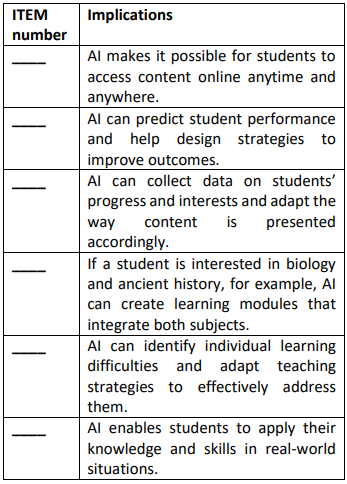Questões de Concurso
Para coseac
Foram encontradas 10.088 questões
Resolva questões gratuitamente!
Junte-se a mais de 4 milhões de concurseiros!
São competências atribuídas, pelo artigo 200 da Constituição Federal, ao Sistema Único de Saúde, EXCETO:
O princípio doutrinário do Sistema Único de Saúde que preconiza a necessidade de atendimento das demandas em saúde de acordo com a vulnerabilidade social dos usuários, buscando oferecer mais a quem mais precisa e com isso reduzir as desigualdades sociais é denominado princípio da
I (1) Lead in; (2) T directs comprehension task; (3) SS read/listen for task; (4) T directs feedback; (5) T directs text-related texts.
II (1) Lead in; (2) T directs comprehension task; (3) SS read/listen for task; (4) T directs feedback; (5) T directs comprehension task; (6) SS read/listen for task; (7) T directs feedback; (8) T directs text-related texts.
Looking at I and II, the most appropriate conclusion is that:

Indique o número do item (de 1 a 6) a que cada implicação se refere e, abaixo, marque a alternativa que contém os itens que você indicou, na ordem em que aparecem na tabela.
Answer question according to TEXT 3 below.
TEXT 3

Available at: https://larrycuban.wordpress.com/2019/11/25/evenmore-cartoons-on-technology/. Access on: Apr. 9th, 2024.
Answer question according to TEXT 3 below.
TEXT 3

Available at: https://larrycuban.wordpress.com/2019/11/25/evenmore-cartoons-on-technology/. Access on: Apr. 9th, 2024.
Answer question according to TEXT 3 below.
TEXT 3

Available at: https://larrycuban.wordpress.com/2019/11/25/evenmore-cartoons-on-technology/. Access on: Apr. 9th, 2024.